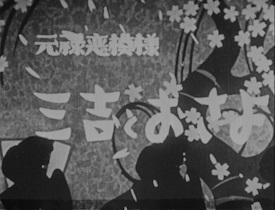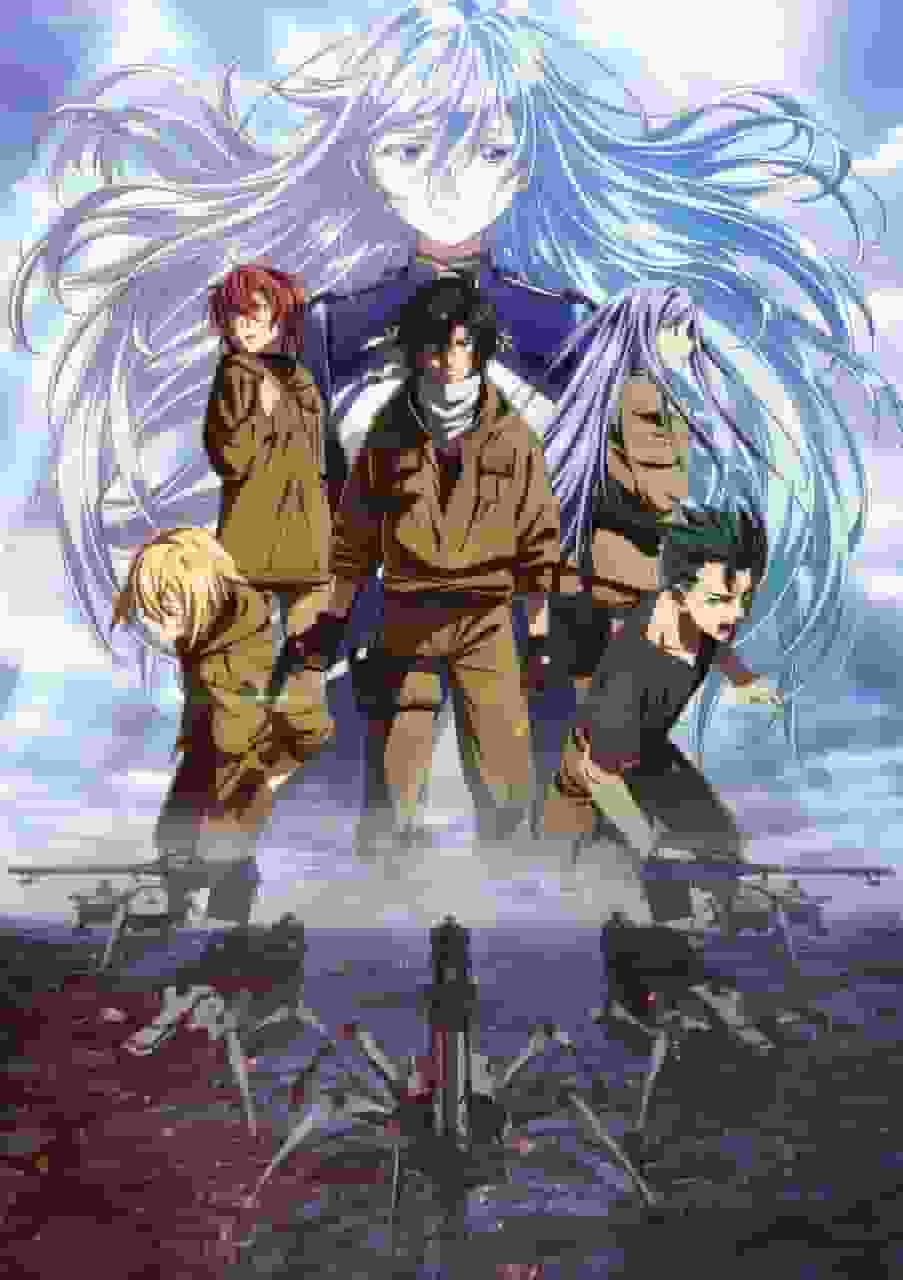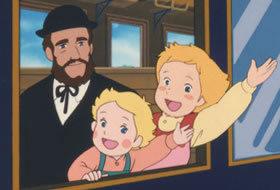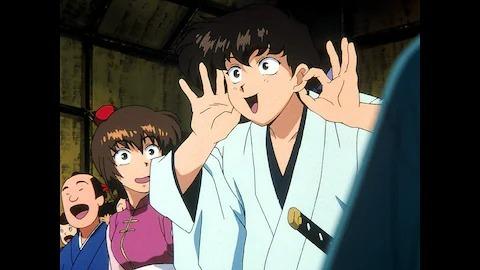Genroku Love Story: Miyoshi and Osayo - A review that explores the charm of period dramas and the depth of love

"Genroku Love Story: Miyoshi and Osayo": The appeal of period drama anime and its historical background■Overview of the workGenroku Koimoyo Sankichi to Sayo (Genroku Love Story: Sankichi and Sayo) is a Japanese animated film released in June 1934. The film was released in theaters and is a short, eight-minute film, but it tells a dense story. It was directed by Seo Mitsuyo and produced by the Japan Manga Film Institute. It was distributed by Towa Shoji Film Division. ■ StoryIn the spring, when the cherry blossoms are in full bloom, foot soldier Miyoshi is enjoying a cherry blossom viewing party. At a cherry blossom viewing party, he spots a samurai's only daughter, Osayo, dancing. A gang of thugs appears and tries to kidnap the beautiful Osayo, escalating into a big commotion. However, Miyoshi bravely stands up to them and succeeds in taking Osayo back from the gang, and the cherry blossom viewing party resumes. This story is detailed on page 212 of the History of Japanese Animation Films. ■ExplanationGenroku Love Story: Mikichi and Osayo is the fourth film in the "Mikichi the Monkey" series. The recording of the third film, My Fleet, was delayed, so the fourth film was released first. This film premiered at the Shochikuza Theaters in Osaka, Kobe, and Kyoto, where it was well received and so popular that it was shown in a series of films. It is also known as a period drama parody of the RKO film King Kong, which was released in 1933. ■ Main staffThe music was composed by Nishigaki Tetsuo, and his music adds depth and emotion to this animated short. ■ Historical background and cultural significanceIn the 1930s in Japan, animation films were developing rapidly against the backdrop of the early Showa period. During this period, silent films were still the norm, and music and sound effects played an important role in complementing the story. Genroku Koimoyo: Miyoshi to Osayo is one example of this, with Nishigaki Tetsuo's music being an important element in livening up the story. This work can also be said to be a pioneer in the animation of the period drama genre. Period dramas are a traditional Japanese story format that often portray themes such as bushido, loyalty, and love. While respecting this tradition, "Genroku Koimoyo: Miyoshi to Osayo" also adds a new appeal by incorporating the appearance of modern gangs and parody elements. ■ Appeal and evaluation of the workThe greatest appeal of "Genroku Love Story: Miyoshi and Osayo" is the dynamic story and characters depicted in such a short time. Miyoshi's bravery and Osayo's beauty leave a strong impression both visually and in the story. In addition, the confrontation scene with the gang is a mix of tension and humor, and has the power to draw the audience in. This film was highly praised by the audience at the time. In particular, the favorable reception it received when it was released at the Shochikuza Theater in Osaka, Kobe, and Kyoto is proof of the high quality of the film. In addition, the parody of "King Kong" must have been a fresh surprise for movie fans at the time. ■ Recommendations and related worksIf you enjoyed Genroku Koimoyo: Mikichi and Osayo, we recommend the other works in the Mikichi the Monkey series. In particular, the third work, Oira no Kantai, has an equally fascinating story and characters. For those who want more period drama animation, we also recommend Cyborg 009 from the 1960s and Akadō Suzunosuke from the 1970s. These works respect the traditions of period dramas while offering a new style of animation that incorporates elements of science fiction and action. ConclusionGenroku Koimoyo: Mikichi to Osayo is a shining work in the history of Japanese animation films from 1934. Its short but dense story, charming characters, and fusion of period drama and parody make it enjoyable for modern audiences as well. We hope that through this work, you will be able to feel the charm of Japanese animation in the early Showa period and its historical background. |
<<: Ponsuke's Spring: A moving story seen from a new perspective and its appeal
>>: Banzai Black Cat: A thorough evaluation of the charming characters and depth of the story
Recommend
The appeal and reviews of the first season of Mupon: For those looking for a new anime experience
Moo Pon [1st Season] - The appeal and evaluation ...
The appeal and evaluation of "Konchu Tsurezuregusa": A masterpiece anime that depicts the beauty of nature and the mystery of life
The charm and evaluation of "Konchu Tsurezur...
UHO Future Rescue 2061 - Exploring the possibilities and limitations of future rescue
UHO Future Rescue 2061 - Challenges and Hopes for...
Jia Ling's spoof video of Hua Mulan is offline, Xinhua News Agency broadcasts a special report focusing on the matter
In recent days, Jia Ling's spoof video of Mul...
Star Wars actor David Prowse dies at 85
According to foreign media reports, British actor...
Heya Camp△ episode 0 review: What is its appeal as a spin-off of the Yuru Camp△ series?
Heya Camp △ episode0 - Heya Camp Episode Zero - C...
"Black Widow" live-action movie hits the global box office with over $215 million in its first weekend
Marvel's latest masterpiece "Black Widow...
Nolan's "Tenet" Hong Kong and Taiwan release posters revealed, one day ahead of North America
Recently, Warner released two versions of the rel...
How to Train Your Dragon spin-off series How to Train Your Dragon: Nine Kingdoms will be released on December 23
Today (December 9), DreamWorks released the lates...
"Fantastic Beasts" releases Chinese style red envelope cover, adding wings to the mythical beast Zouwu
Today (January 30), the official Weibo of the Mag...
Kaibutsu-kun: Invitation to Monster Land - A thorough review! What's the appeal of the 4th episode of the 2nd season and the 2nd movie?
"Kaibutsu-kun: Invitation to Monster Land&qu...
The appeal and evaluation of "Manga Nihon Emaki": A fusion of history and art
"Manga Nihon Emaki": The appeal of anim...
Netflix animation "Uncle in Another World" released a Chinese trailer and will be officially broadcast on July 6
Netflix TV animation "Uncle in a Different W...
Movie stars worry about AI threats: What if someone uses my face and voice to make a movie?
As generative artificial intelligence continues t...
Screenwriters and actors collectively stopped working, and the sequel to the sci-fi masterpiece "Tron: Legacy" was postponed indefinitely
Do you still remember the classic sci-fi movie &q...









